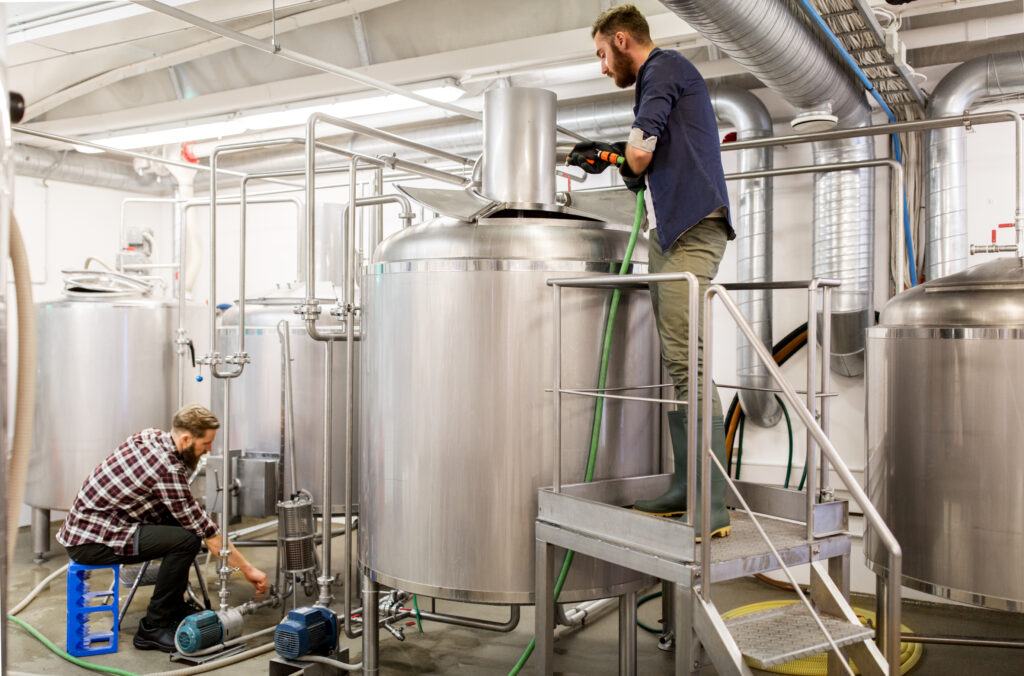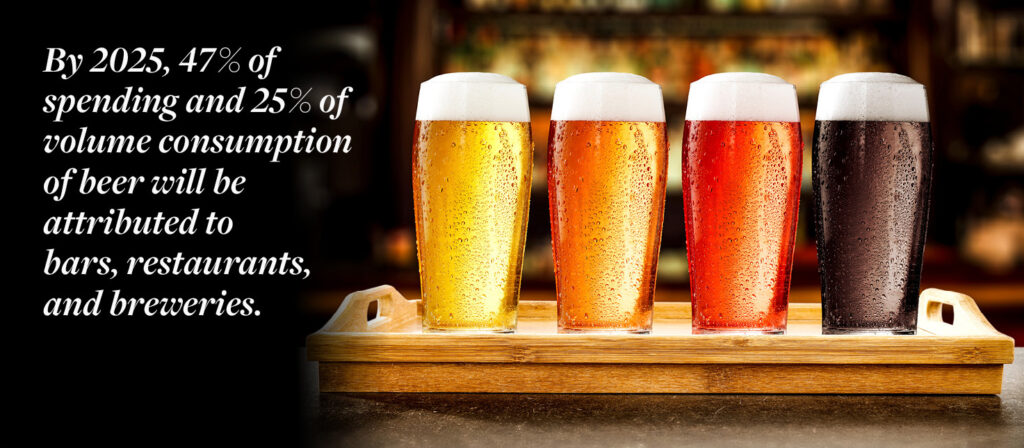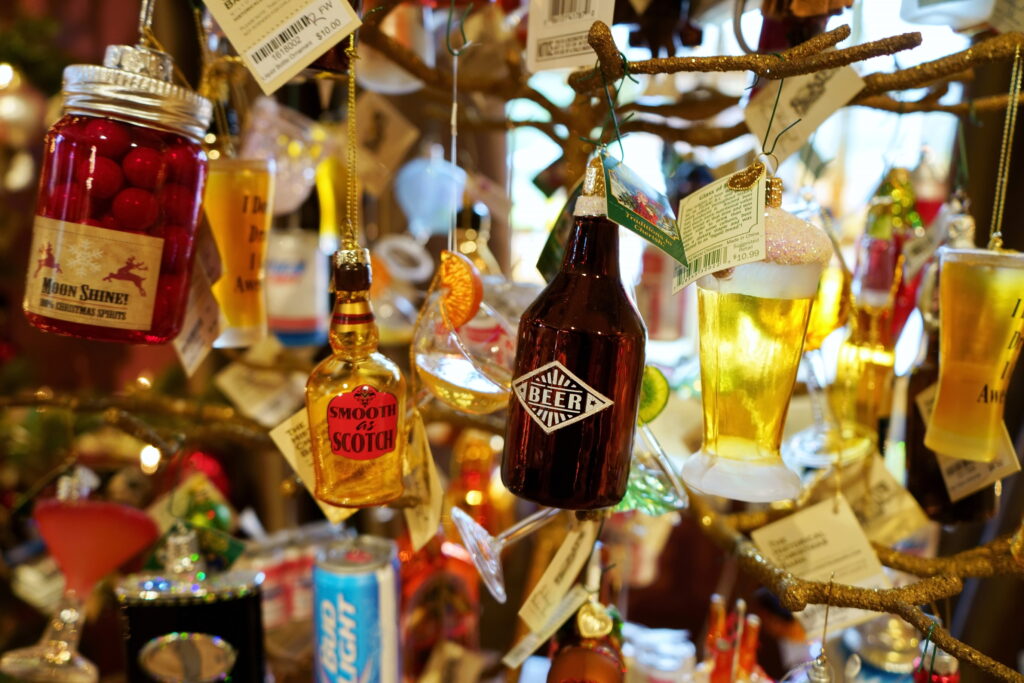
By Jorge Olson — Co-founder & CMO of Hempacco and Green Globe International, Author of “Build Your Beverage Empire”
The beverage industry is growing rapidly, with innovators entering the space year after year touting the next big idea. The global beverages market is expected to grow from $3.56 trillion in 2023 to $4.39 trillion by 2028 at a CAGR of 4.26%, allowing room for disruptors to enter the space, especially considering two of the largest growing categories in the beverage industry are hemp beverages and mushroom beverages.
If you are set on being one of those disruptive entities in the beverage industry, you will want to devise some novel marketing strategies that will set them apart from the competition. Those entering the beverage industry or seeking to retool their marketing approach need to consider several factors, including budget, target audience, and branding.
Entering today’s beverage industry
The beverage industry comprises a litany of products, from ales and liquors to flavored seltzers, hard teas and lemonades, and more. As consumer demand grows, innovators in the beverage space churn out an abundance of ever-expanding options, and as markets continue to grow, more opportunities arise for beverage companies to get a foothold.
With over 2,000 beverage companies in the United States alone, effective marketing is more important than ever before. Marketing builds awareness of your brand and is especially integral to launching and growing new businesses within the beverage space.
The cost of launching and scaling a new business — especially one tied to a physical product — can be high. If you are seeking to disrupt a long-standing industry with a new product idea, you must be savvy about your marketing budget to have the greatest impact and bang for your buck.
Every marketing strategy begins with a great idea that should be formed with consideration to what consumers are seeking but not finding in the current market. The beverage’s formula should be consistent before being unleashed onto the market, and the opinions of experts and stakeholders should also be considered. Being thoughtful about your actions before launching can help you avoid costly (or embarrassing) mistakes.
The beverage industry is incredibly competitive, but with the right product and the right marketing strategies, your product can make considerable waves.
Innovative marketing approaches
In an industry that can be as crowded as the beverage space, new businesses will be required to think outside of the box concerning marketing approaches. The old standard marketing strategies will not likely garner enough engagement to disrupt such a massive industry.
Savvy marketing can also help consumers create an emotional connection to your brand. Many beverages can be connected to moments or memories for consumers — that bottle of Coca-Cola they shared with their dad on a fishing trip or their very first beer when they turned 21. Tapping into these emotional markers can help elevate a brand and solidify the brand’s story within the current culture.
There are several innovative marketing strategies that your beverage company can leverage, but your chosen strategy (or strategies) should depend on the market you are targeting, your specific product, location, budget, and several other factors. The thoughtful pre-planning discussed in the previous section will help determine the right strategy to meet their goals.
Social media marketing
Social media marketing is nothing new, but it is constantly changing. It seems that with every introduction of a new platform or a change in an algorithm, the goalposts for marketers are moved.
Today’s approach to social media marketing utilizes a variety of platforms for a diversified strategy. TikTok is still going strong as the platform of choice for many Gen Zers, but older generations may still prefer Facebook or Instagram. This means you can capture a larger slice of your target demographic by splitting marketing among the various popular platforms.
Social media is still suitable for quickly sharing content with a large number of people and is still the best way to create a personal connection with your target market. By engaging with people across the platforms, answering questions, and sharing content they want to see, you can grow your social media following and brand recognition.
Even though social media is not a new marketing tactic, it is constantly changing and creating new hurdles for business owners. Remaining aware of changes and best practices will allow you to get the most out of social media use.
AI and new technology
It seems like everywhere you look; artificial intelligence (AI) is taking over. For marketers who know how to harness its power with predictive analytics, AI could revolutionize how products are created specifically for consumers. Through AI technology, consumer products like beverages can be designed to exactly what customers want and marketed to the market at large based on what they want or need.
Through AI-enabled packaging creation, specific segments of a market can be targeted and catered to. Branding, ingredients, feel, and culture can be considered — allowing businesses to elevate their new product above other products in the market.
AI also allows companies to gather data on consumer reactions to marketing campaigns quickly and accurately. With this data, businesses can quickly assess whether a campaign is working — or if they need to shift focus.
High-quality content marketing
The best brands are not just products on a shelf. They are entities with which people develop connections.
To help foster those meaningful connections, businesses should focus on creating high-quality content around their brand. This can include blog content that shares brand-related stories or learning opportunities. It can also include video content showing behind-the-scenes making your beverage product or people enjoying it in real-life scenarios.
The focus of your content marketing should be quality and engagement, so take a look at what your competitors do with their own content marketing and strive to do something different. Quality content marketing can drive new sales, create new customers, and help you unveil new products.
Paid advertising
Like social media, paid advertising is not a new approach but is being approached in new ways. As we enter the new year, video is still ruling the internet, so incorporating video content into your paid online ads will allow your ad to stand out over the ads that feature only static images or simple copy.
When approached correctly — and with your target market always in mind — paid ads can be incredibly effective. In fact, recent studies show that paid YouTube ads are 84% more likely to capture viewer attention than traditional TV ads, which can be far more expensive.
The way people consume media is always changing. Targeting the most viewed platforms with your paid advertisements will ensure better reach and engagement.
Seize the season
It’s an oft-repeated marketing myth that the Coca-Cola company owns the “rights” to Santa Claus. While that is not true, the company did have a hand in creating some of Santa’s most recognizable features for a 1931 marketing campaign. The white beard, the rosy cheeks, and twinkling eyes combined with Coca-Cola’s red and white branding became solidified in the cultural zeitgeist, forever connecting Coca-Cola and Christmas.
Beverage companies are positioned well to seize seasonal marketing opportunities. The dog days of summer go well with a crisp lemonade, while the dead of winter leaves many craving a hot cocoa or hot toddy.
Beverages are a part of gatherings, milestone moments, and seasonal celebrations, no matter the time of year. By connecting emotion with brand recognition, marketers can use seasonal positioning to further their reach.
Brand partnerships
With our hyper-connected world, forging brand partnerships is easier than ever before. Beverage companies have created some famous brand partnerships over time, such as GoPro and Red Bull, or Bonne Bell and Dr. Pepper.
With a brand partnership, a mutually beneficial collaboration is formed. New products can leverage the popularity of the established brand, and the partner company can have something novel to share with its audience. Brand partnerships can also allow a beverage company to create exciting new taste combinations or product ideas.
If you are interested in finding another company for a brand partnership, consider their target audience and brand identity. That potential partner’s goals should match your own to forge a successful collaboration.
Engaging events
When a beverage hits the scene, the creators often host a launch event to introduce the beverage to the market. This marketing strategy is still valid, but beverage creators seeking to disrupt the status quo should put a lot of time and effort into making their event stand out among the competition.
Knowing your audience lets you know who to invite to your event to get your new beverage in front of the right people. The proper venue and the right theme can also help elevate your event from just a simple launch to a night no one will soon forget. However, hosting elaborate launch events can be pricey, so an ROI analysis should be performed before you go all-in on the “event of the century.”
The goal of any marketing campaign is to increase visibility and engagement surrounding your new product. If you aim to disrupt an industry as long-standing and — let’s face it — crowded as the beverage industry, your marketing approach will need to be thoughtful, well-researched, and novel if you wish for it to make the intended impact.
By considering emerging marketing approaches and developing new takes on old marketing standards, a new beverage business with a great product idea can thrive.










